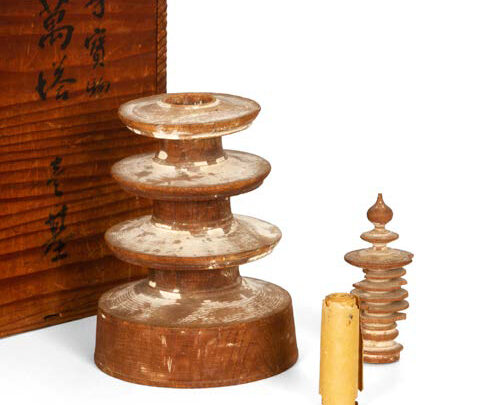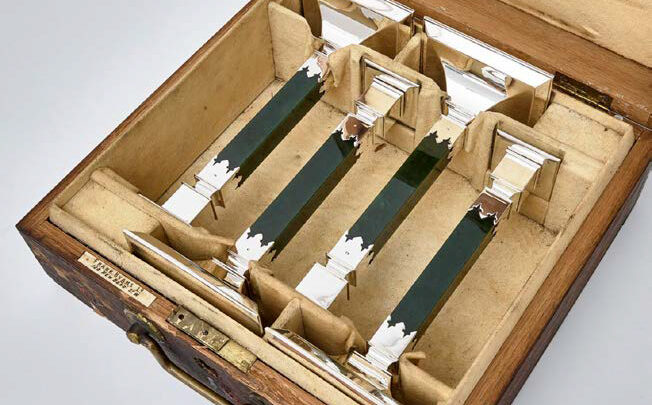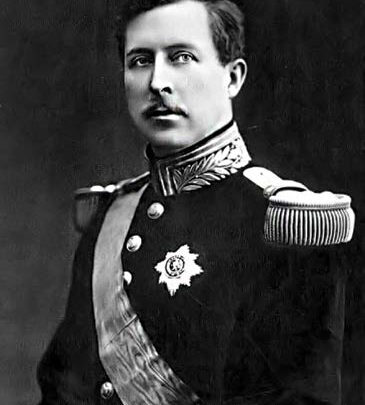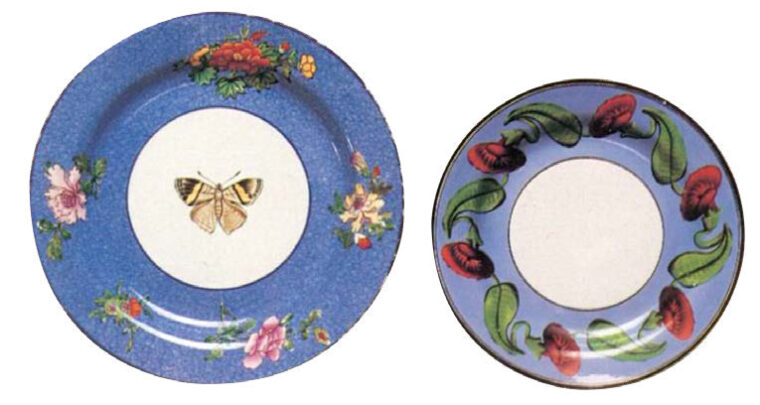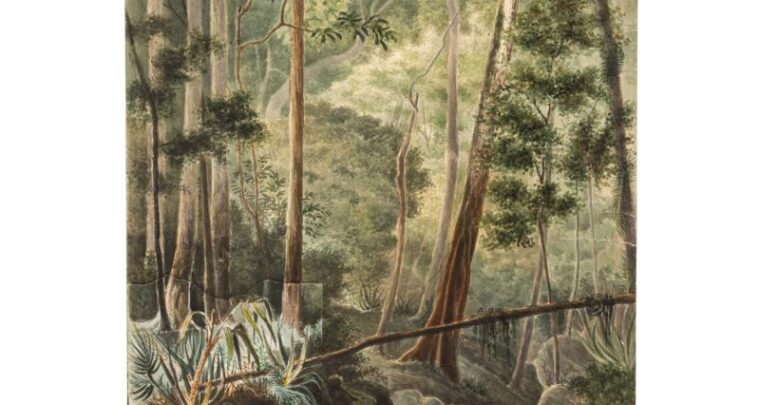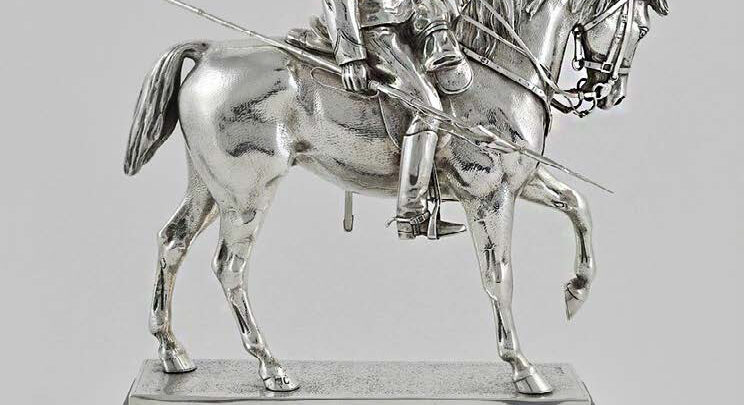ENGLISH SILVER FOR WRITING
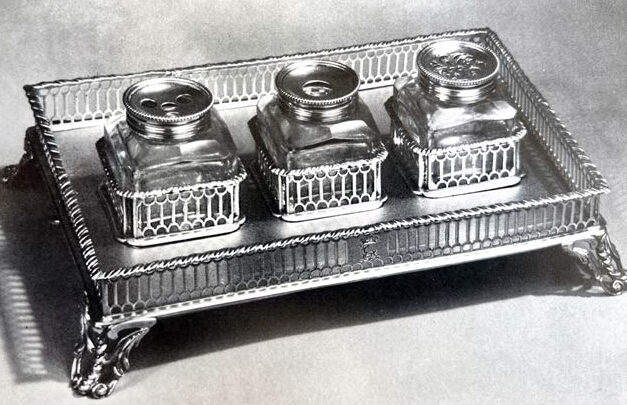
DR ALISON M HOLLOWAY
Little is recorded of silver, used in England for writing, before the time of the Commonwealth (1649-1660). There are references to two standishes in the inventory of plate belonging to King Henry VIII dated 1520. One is of Spanish origin, the other probably English marked with a lion.
Sir Robert Cecil’s inventory dated 1612 lists silver plate at the houses of Theobalds and Hatfield. It groups “white plate commonly used in the house” into different categories including “silver for writing”. Sir Robert had two silver standishes,…
